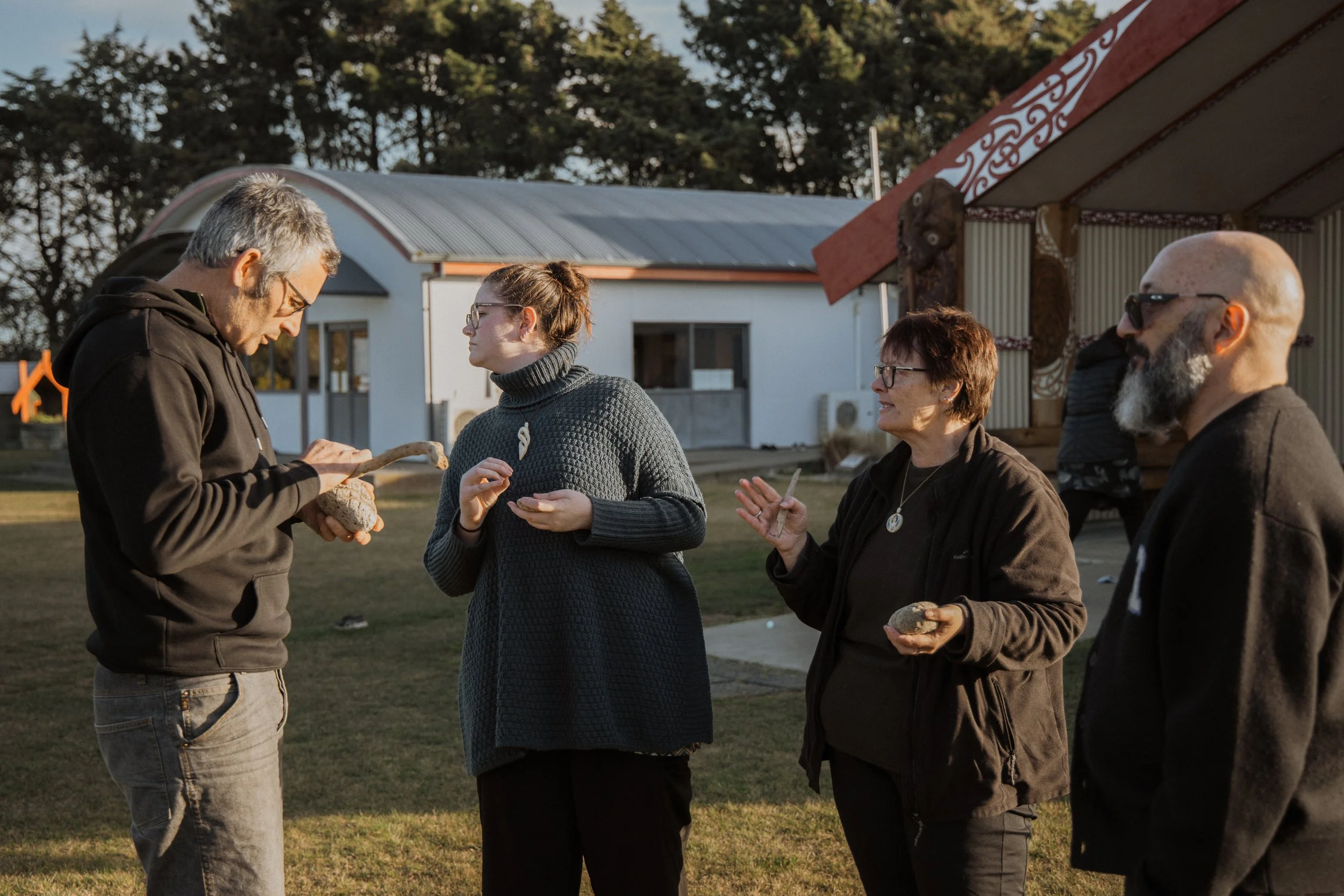Puanga Taumaha Wānanga
In July, we hosted a two-day Puanga Taumaha wānanga in Ashburton, where attendees learned about the Moriori New Year and its significance within tikane Moriori. Participants were encouraged to plan their own meaningful New Year celebrations with their hūnau, weaving in these values alongside supporting rongo and karakī.
Attendees of the wānanga recite a karakī while holding kopi rākau they crafted during the previous day’s workshop, while a .breakfast of Rēkohu blue cod and shellfish steam on the open fire.
In July, we hosted a two-day Puanga Taumaha wānanga in Ashburton, where attendees learned about the Moriori New Year and its significance within tikane Moriori. Participants were encouraged to plan their own meaningful New Year celebrations with their hūnau, weaving in these values alongside supporting rongo and karakī.
Jessica Ashton (left) and Lisa Donaldson (right) carve tuwhatu from pungatei (pumice).
After a restful night, guests gathered at dawn to prepare a delicious kei ata (breakfast), cooked over an open fire as the stars faded. Alongside this, they unveiled pumice tuwhatu (carved figures) created during the previous day’s session. Traditionally, these figures represented etchu (deities) such as Pou and Tangaroa, who presided over fish. Participants also crafted kopi rakau — sticks to which kopi seeds were traditionally bound — an ancient practice described by Johann Friedrich Engst, who wrote: “Each person points the stick to Puanga and pronounces his speech of worship or supplication for a blessed fruitfulness of this tree.”
As part of our agreement with Te Mātāwai, who kindly funded this tchipangă, we will be delivering further taumaha wānanga before the end of the current financial year. We have also developed a series of Puanga resources, which will be shared with hūnau ahead of next year’s celebrations. Planning for these wānanga is underway, and we look forward to sharing details soon.
Taumaha to Tiriana Smith and Deborah Goomes for leading this kaupapa.
Supported by Te Mātāwai – Kia ūkaipō anō te reo.



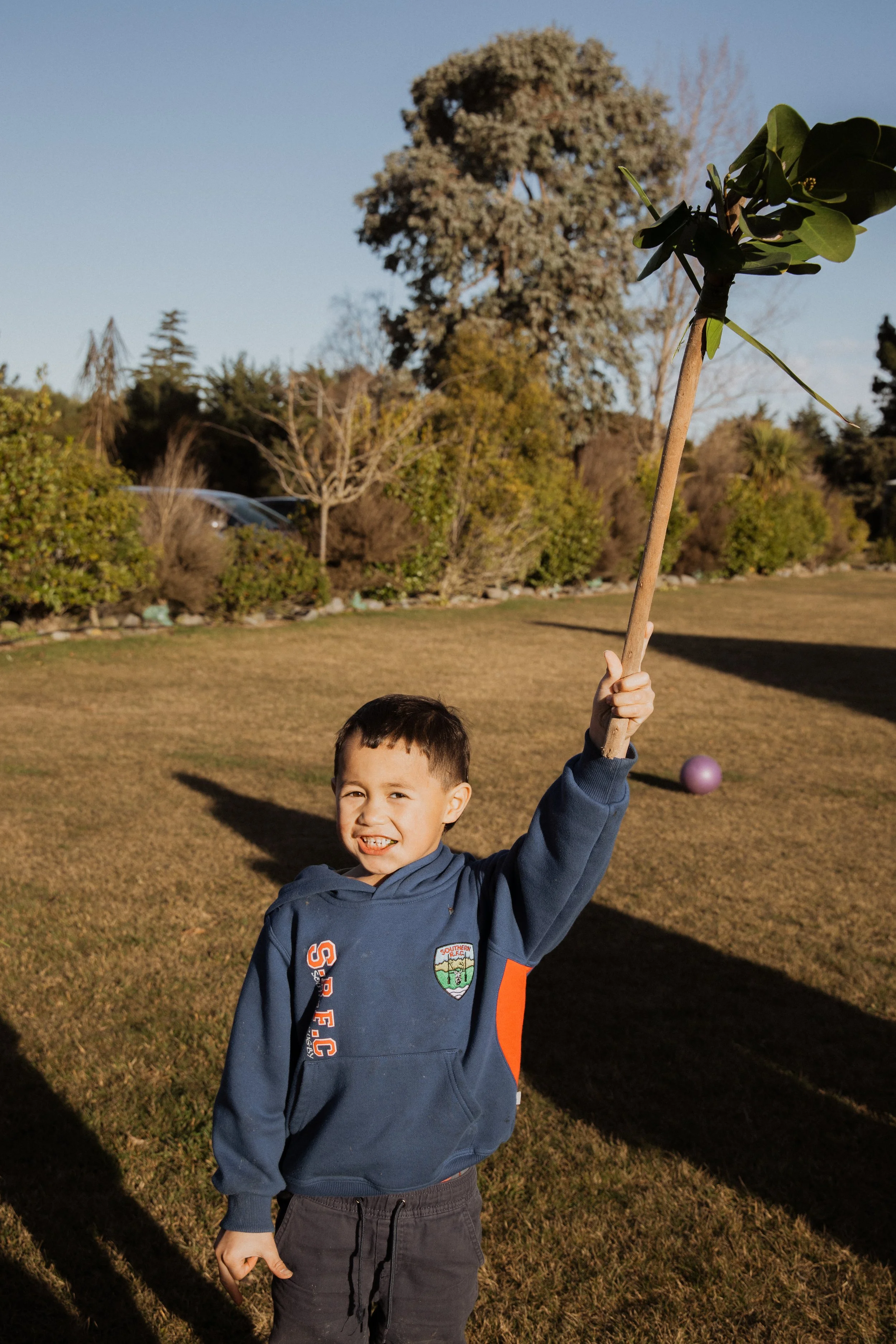




Rongo Puanga Taumaha
Written by Tiriana Smith
Hokomenetai Puanga taumaha!
Ta hunau o ta rangi
Kioranga!
Puanga
Tautoru
Matariki
Ka whetu nawenewene
Wanui
Tukepipi
Ta hunau o ta rangi
Kioranga!
Hokomenetai Puanga taumaha!
In unity Puanga thanksgiving
The family of the heavens
Greetings!
Puanga
Tautoru
Matariki
Forgotten stars
Wanui
Tukepipi
The family of the heavens
Greetings!
In unity Puanga thanksgiving
You can listen to Puanga Taumaha here.
Repatriation of Kōimi T’chakat from Canberra
In March, Trustees Jared Watty and Belinda Williamson travelled to Canberra on behalf of HMT to take part in the profoundly moving repatriation of two kōimi tchakat’ Moriori (Moriori ancestral remains) from the National Museum of Australia. This moment marked not just the return of our karāpuna (ancestors), but another step in the continuing journey of reconnection and healing for our imi.
We are pleased to share a significant update regarding the recent repatriation of two Kōimi T’chakat Moriori from the National Museum of Australia in Canberra.
Left to right: Belinda Williamson, Jared Watty and Kiwa Hammond.
Photo courtesy of Jason McCarthy/National Museum of Australia.
Earlier this month, Jared Watty and Belinda Williamson, representing the Hokotehi Moriori Trust, travelled to Canberra to participate in this profoundly moving event.
A respectful and culturally sensitive repatriation ceremony began with a powerful water ceremony performed by the Ngunnawal people, who welcomed the Te Papa Tongarewa team and our trustees Jared Watty and Belinda Williamson to their land. A smoking ceremony led by the Ngambri people followed, which cleansed and honoured the kōimi t’chakat Moriori during the formal handover.
We were honoured to accompany a dedicated team from Te Papa, including Dr Te Herekiekie Herewini, Dr Arapata Hakiwai, Kiwa Hammond, and Hinerangi Edwards. Their expertise and cultural knowledge were invaluable throughout the process.
The Kōimi T’chakat Moriori are now safely housed in the Whatu Tchap at Te Papa in Wellington, where they will remain until their final journey home to Rēkohu and Rangihaute. A small, intimate ceremony was held at Te Papa to mark their safe arrival.
This repatriation is a significant step in our ongoing efforts to reclaim and honour our ancestral heritage. We extend our heartfelt gratitude to the National Museum of Australia, the Ngunnawal and Ngambri peoples, Te Papa, and all those who contributed to the successful return of our karāpuna.
We will inform you of developments regarding the eventual return of our karāpuna to their ancestral homeland.
Hokotehi Moriori Trust joins New Zealand’s pledge to the Island-Ocean Connection Challenge
Hokotehi Moriori Trust joins New Zealand’s pledge to the Island-Ocean Connection Challenge.
We are pleased to announce that Rēkohu has been included in the prestigious Island-Ocean Connection Challenge (IOCC), joining Rakiura and Maukahuka as part of a global network of islands dedicated to ecological restoration by 2030. This inclusion provides us with the invaluable opportunity to collaborate with international experts and donors, enabling us to advance our long-term vision for restoring our islands. We are working towards a sustainable future for Rēkohu and the broader global community by participating in this challenge.
Rēkohu is a haven for native birds and plants found nowhere else, including the karure/Chatham Island black robin, Chatham Island tāiko/magenta petrel, and Chatham Island albatross/hopo. We have the opportunity to make a real impact on biodiversity and ocean health. By investing in these projects, we are contributing to our planet’s well-being and future and helping restore ecosystems, support the Predator Free 2050 initiative, and ensure a sustainable future for generations to come, fostering a healthier environment for all.
The IOCC pledge is to continue removing feral cats from Rangihaute and complete the first phase of the Predator Free project on Rēkohu by removing possums and feral cats. The long-term goal is to remove possums, feral cats, and rats from the archipelago and see the seabird-driven ecosystem thriving. This community-driven project is led by the Chatham Islands Landscape Restoration Trust, with the Hokotehi Moriori Trust and Ngāti Mutunga o Wharekauri. It is supported by the Department of Conservation, Chatham Islands Council, and Predator Free 2050 Ltd.
Recently, representatives from the Hokotehi Moriori Trust, Ngāti Mutunga o Wharekauri Iwi Trust, and the Chatham Island Landscape Restoration Trust travelled to Bluff to launch and sign the pledge with our IOCC partners. During our visit, we also had the opportunity to meet with organisations such as Re:wild and Island Conservation, where we discussed our shared goals for restoring Rēkohu and Rangihaute. Our heartfelt gratitude goes to the whānau at Te Runaka o Awarua for their manawareka/warm hospitality during our visit.
PUANGA (MORIORI NEW YEAR) CELEBRATIONS
It all begins with an idea.
What a week of celebrations our Puanga festivities were! We enjoyed sharing our knowledge of this kaupapa with all those who came through the doors of Kōpinga over the week for the various activities we had, whether it was the beautiful feast put on by T'Chieki Marae, Loretta Lanauze, the hūnau who contributed to our communal mural, the crafty mahine who whipped up healing rongoa in the kitchen, the t'chimirik who entered our colouring competition, our hūnau who came to connect with our trustees at our consultation huinga or our hūnau from afar who joined in the fun with our digital resources.














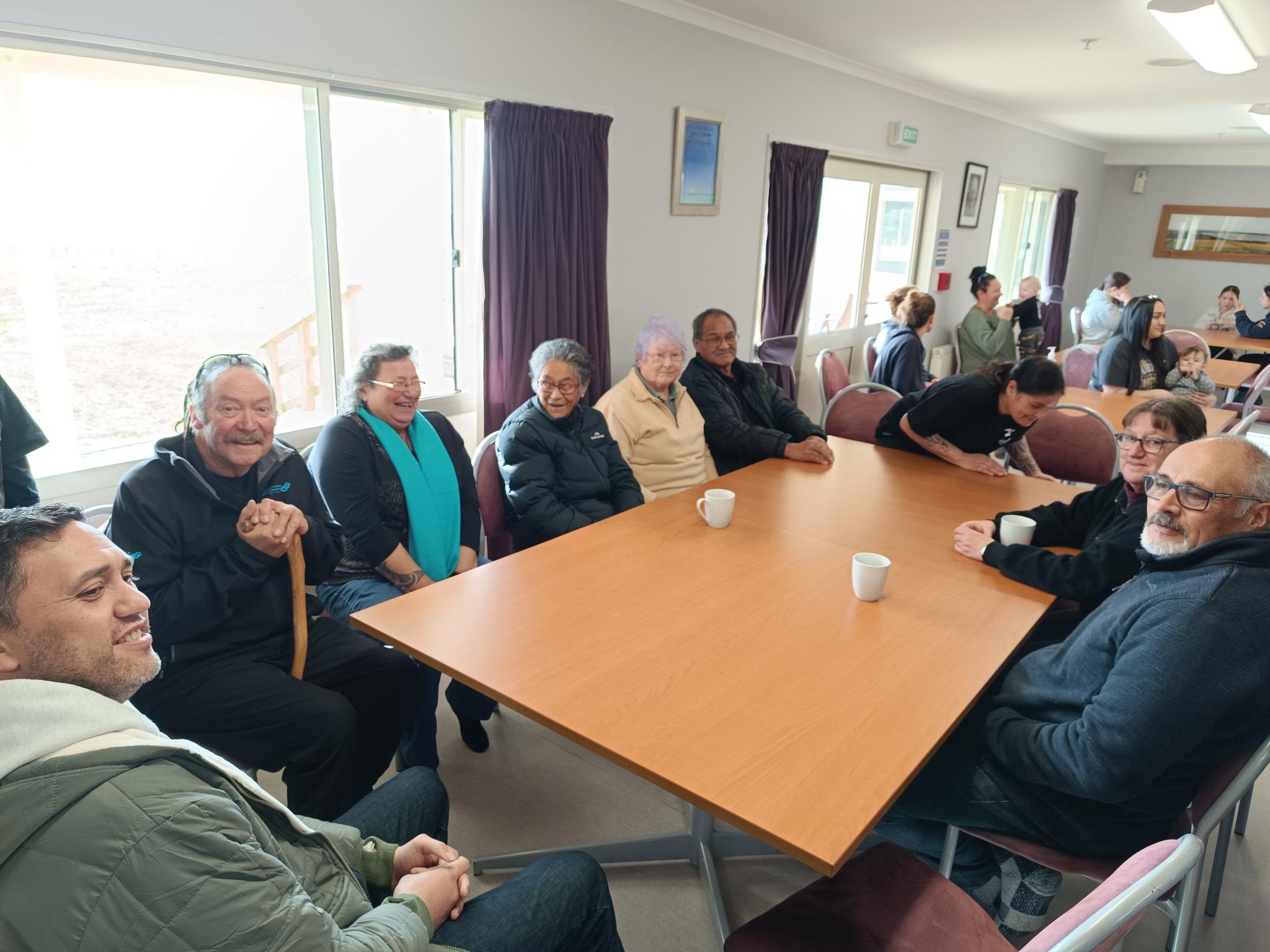
We would especially like to thank Te Puni Kōkiri, whose support made this week of festivities possible.
KAINGAROA KICK-OFF | COMMUNITY PLANTING DAY
It all begins with an idea.
To celebrate the launch of the Predator-Free Chathams programme, we held a community planting day on Friday, July 19, where Rēkohu locals helped to restore Kaingaroa's natural landscape with native and endemic plant species and learnt about local efforts to restore the island's natural landscape.




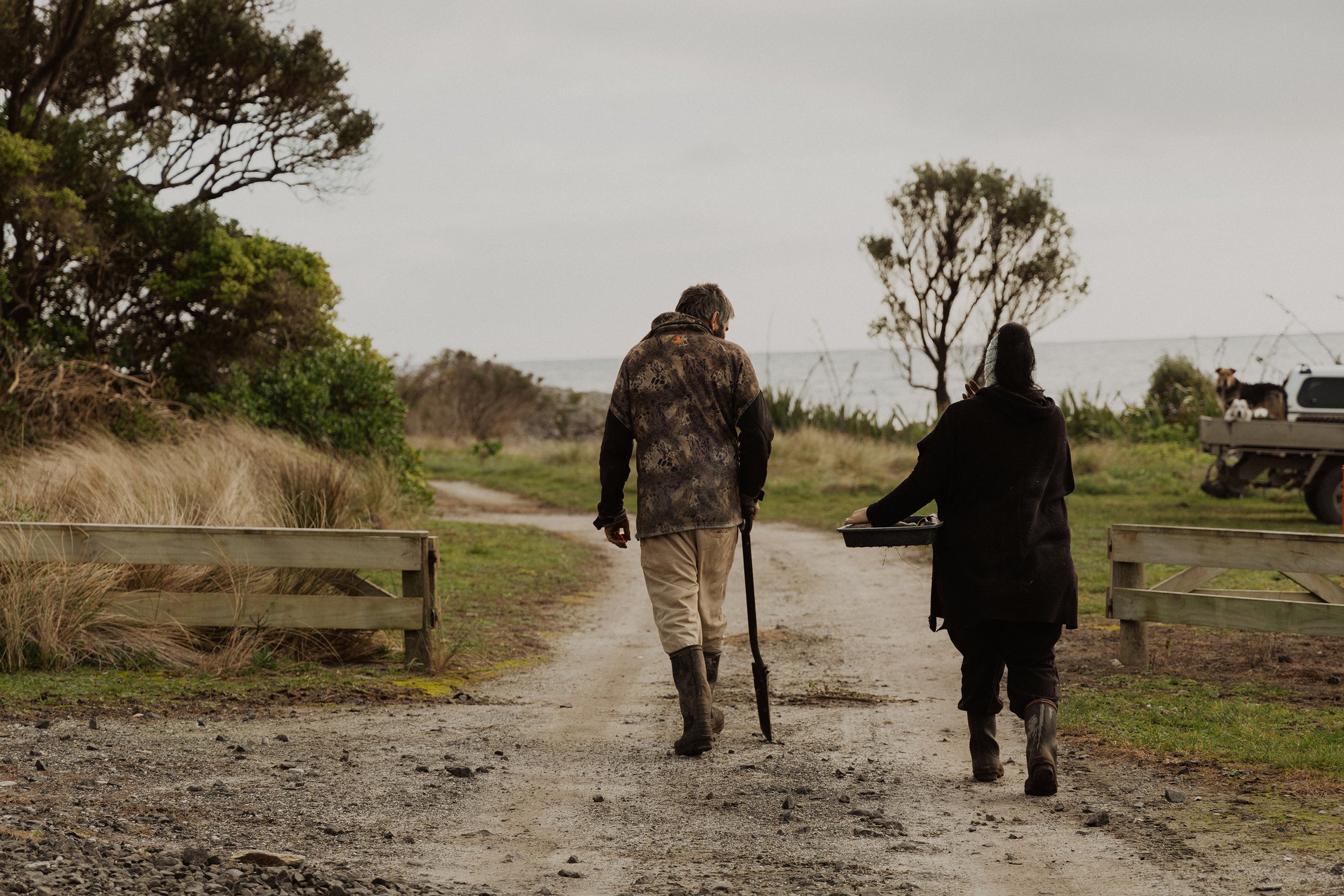






In just a few hours, 700 plants (a mixture of native and endemic species) were planted. We loved seeing our tchimirik getting stuck in, as they will be able to reap the rewards of this mahi for years to come.
This event was a collaboration between Hokotehi Moriori Trust, Chatham Islands Landscapes Restoration Trust and the Department of Conservation.
UPLIFT OF RAUTINI
It all begins with an idea.
After careful planning between Hokotehi Moriori Trust, Ngati Mutunga o Wharekauri, Moriori Imi Settlement Trust and the Department of Conservation (DoC), the excavation of rongomoana 'Rautini' began on July 9.
Hūnau were invited to join us in Te One for karakī and shared breakfast before breaking the ground, and many joined us over the week to wash down bones and scrub the teeth of the whale.

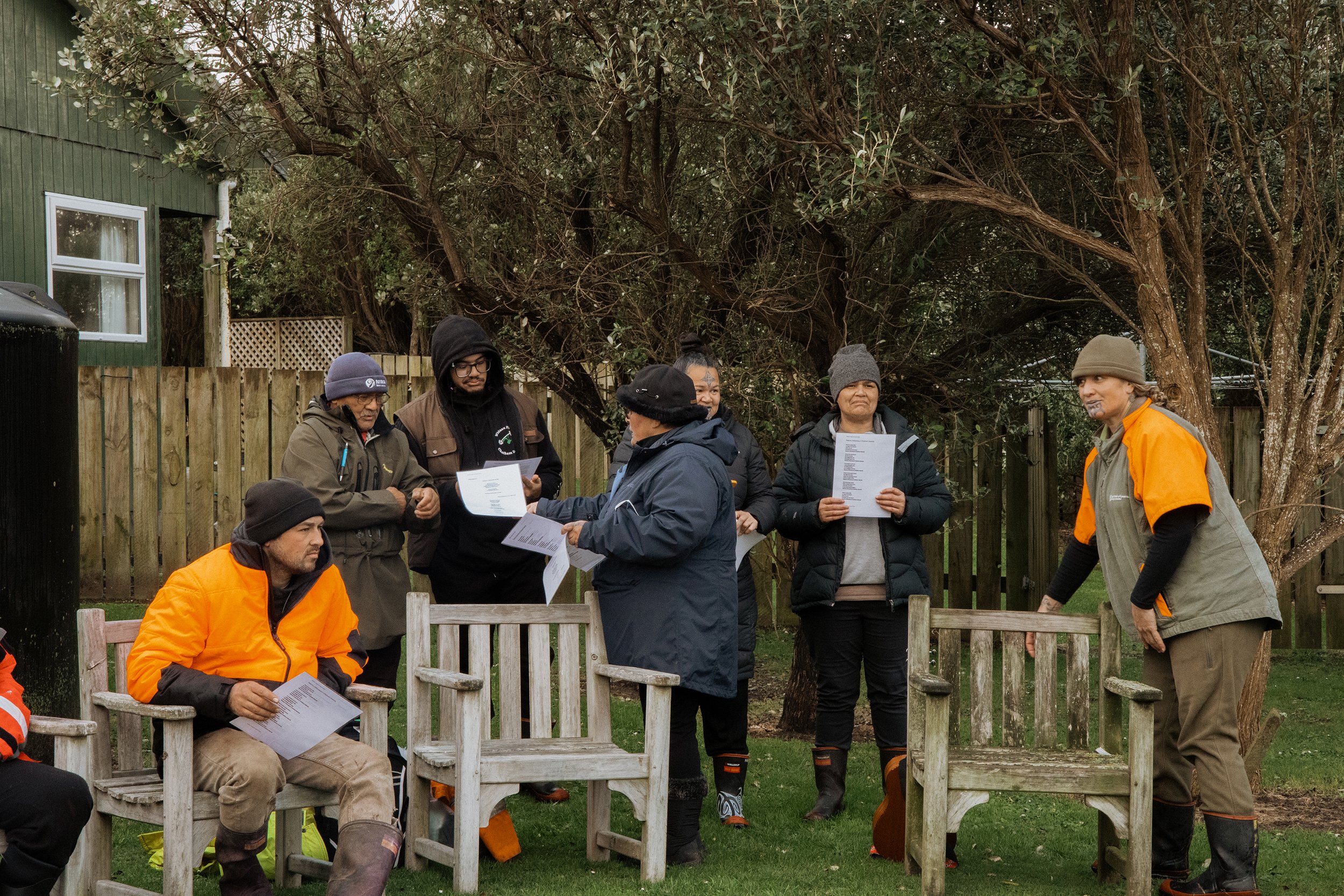


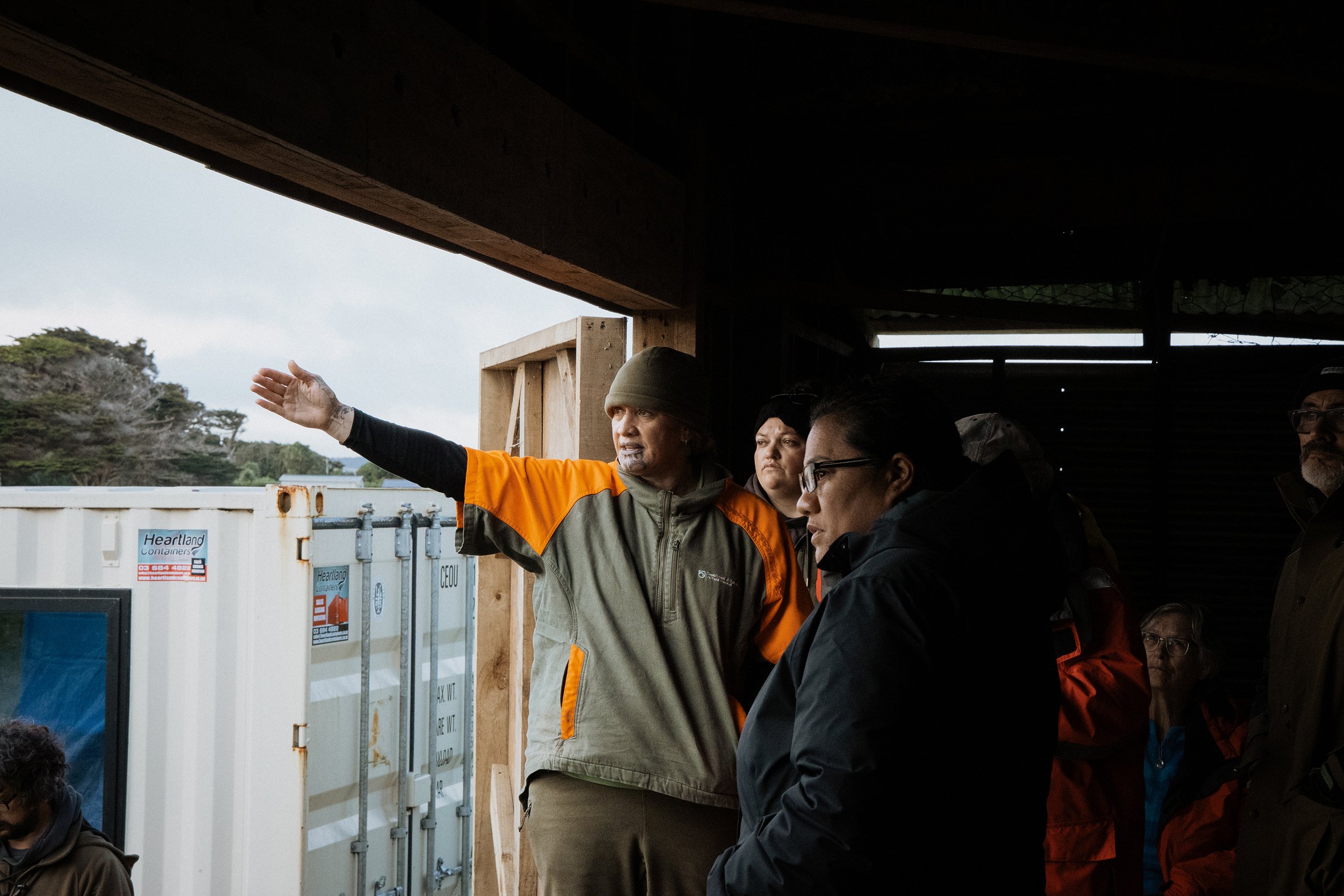








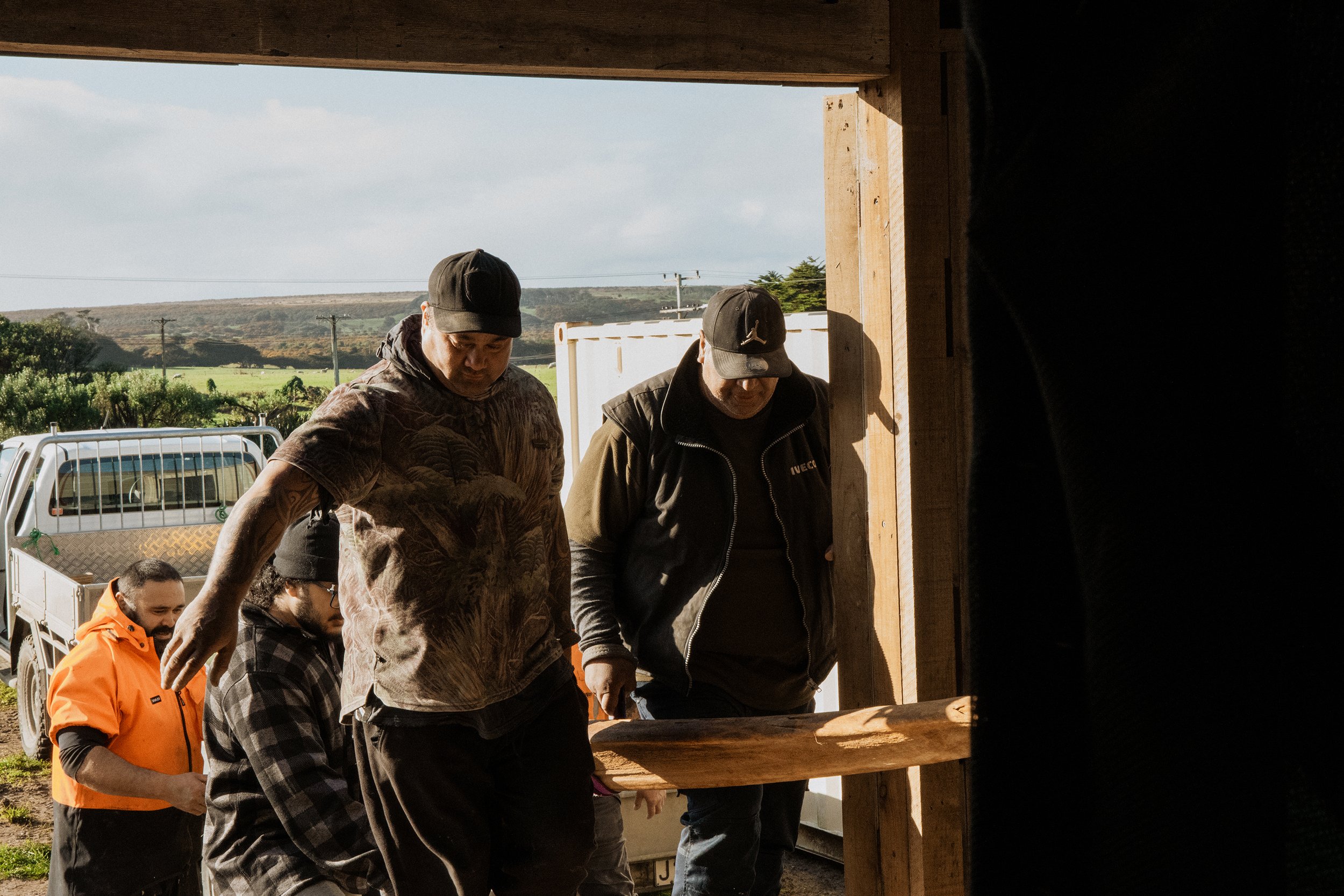
Rautini is now safely stowed in storage until the next stage in this kaupapa begins. A huge taumaha to all our hūnau who helped to make this uplift possible, whale expert whaea Rāmari Stewart and her team from the mainland for sharing their invaluable knowledge with us, and Tiriana Smith and the extended DoC hūnau who have been essential to the success of this kaupapa
Repatriation of Koimi Tchakat
It all begins with an idea.
A pōwhiri for the largest return of kōimi tchakat held at the Museum of New Zealand Te Papa Tongarewa in 2022.
The remains of 111 Moriori and two Maori karāpuna were returned from London’s Natural History Museum.
Credit: Museum of New Zealand Te Papa Tongarewera.
One of the most important projects for our imi is the return of kōimi tchakat (ancestral remains), which were once unceremoniously dug up to be traded as curiosities and, for up to 100 years since, have sat in collections overseas and across Aotearoa.
This mahi is the result over over a decade of research and negotiations, and while this work is ongoing, the remains of over 100 Moriori karāpuna have been returned so far. The remains are being temporarily held in a wāhi tapu – a sacred resting site – at the Museum of New Zealand Te Papa Tongarewa, before they will taken back to their rightful resting place on Rēkohu.
Hou Rongo: Moriori, Music and Manawa
It all begins with an idea.
In a marriage of ancient wisdom and cutting-edge technology, Hokotehi Moriori Trust partnered with a research team from the University of Otago to create an immersive, multi-sensory exhibition – the result of a two-year groundbreaking project to illuminate the cultural vibrance of Moriori people.
The Hou Rongo exhibition was co-designed to combine Totohungatanga Moriori with innovative technology to support cultural revitalisation of New Zealand’s indigenous Moriori people of Rēkohu (Chatham Islands) and is supported by a team of scientists, musicians and media artists from Rēkohu and abroad.


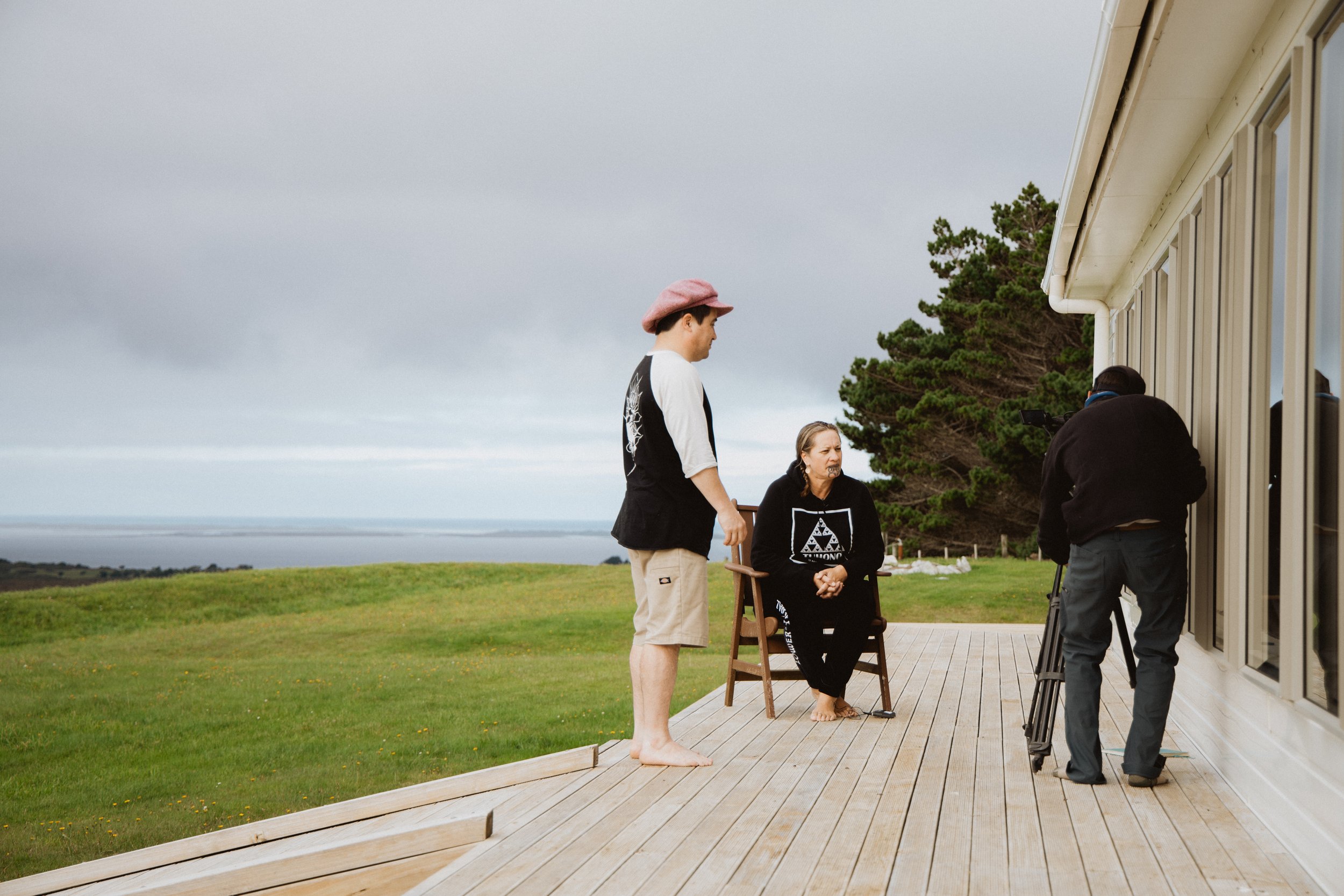



The strong connection between ta imi Moriori and the natural world are brought into the modern world with film, photogrammetry, sound-design and scent reconstruction. 3D-printed replicas of the only two known historic Moriori flutes have been created, allowing visitors the opportunity to handle objects that would otherwise be unavailable.
The strong connection between ta imi Moriori and the natural world are brought into the modern world with film, photogrammetry, sound-design and scent reconstruction. 3D-printed replicas of the only two known historic Moriori flutes have been created, allowing visitors the opportunity to handle objects that would otherwise be unavailable.
Large video projections, paired with an immersive soundscape offer an ambient sense of place, evoking the feeling of being on Rēkohu amid the realms of the etchu (deities). A physical representation of the pou at Kōpinga marae displays Moriori iconography and features a video of the Karakii Rangitokona, the Moriori Creation Story, spoken in ta rē Moriori.
Visitors to the exhibition can immerse themselves the vibrance of Moriori culture through multi-sensory activities utilising physical, digital and extended reality components while enjoying rongo (songs), stories and hands-on wānanga (workshops).
Preservation of Rakau Momori
It all begins with an idea.
In March, Te Papa conservator Nirmala Balram returned to Rēkohu with imi member Bella Penter to further treat the rākau momori housed within the Kōpinga grounds. During their visit, stages one and two of an ongoing conservation plan were completed, with the assistance of on-island volunteers.
Nirmala and Bella last visited in September 2023, when condition reports, measurements, images and general descriptions were completed for each of the stored rākau momori. Since then, continued observation, borer treatment and biocide spraying have seen insect infestations eradicated.





The conservation focus of the most recent visit was to stabilise the dry rot and disintegrating parts of the rākau momori. Resin and synthetic wood glue were applied, and the trees were carefully bandaged to align loose elements to the base and minimise future loss.
“The focus is for the physical preservation of the harvested trunks to ensure the intangible links can be maintained for the present and future generations,” said Nirmala.
Of the 29 trees removed between 2010 and 2015, the majority are from Hāpūpū, with one each from Taia, Kairae and Pehenui. In order to fill in the gaps of what can and cannot be seen today, imagery from previous research initiatives is being consulted to gain a clearer understanding of what each tree might once have represented.
The next step in the conservation plan is developing a stable, humidity-controlled environment for the 29 rākau momori. This will halt their deterioration and make future conservation efforts easier. Plans for this miheke whare are underway.



